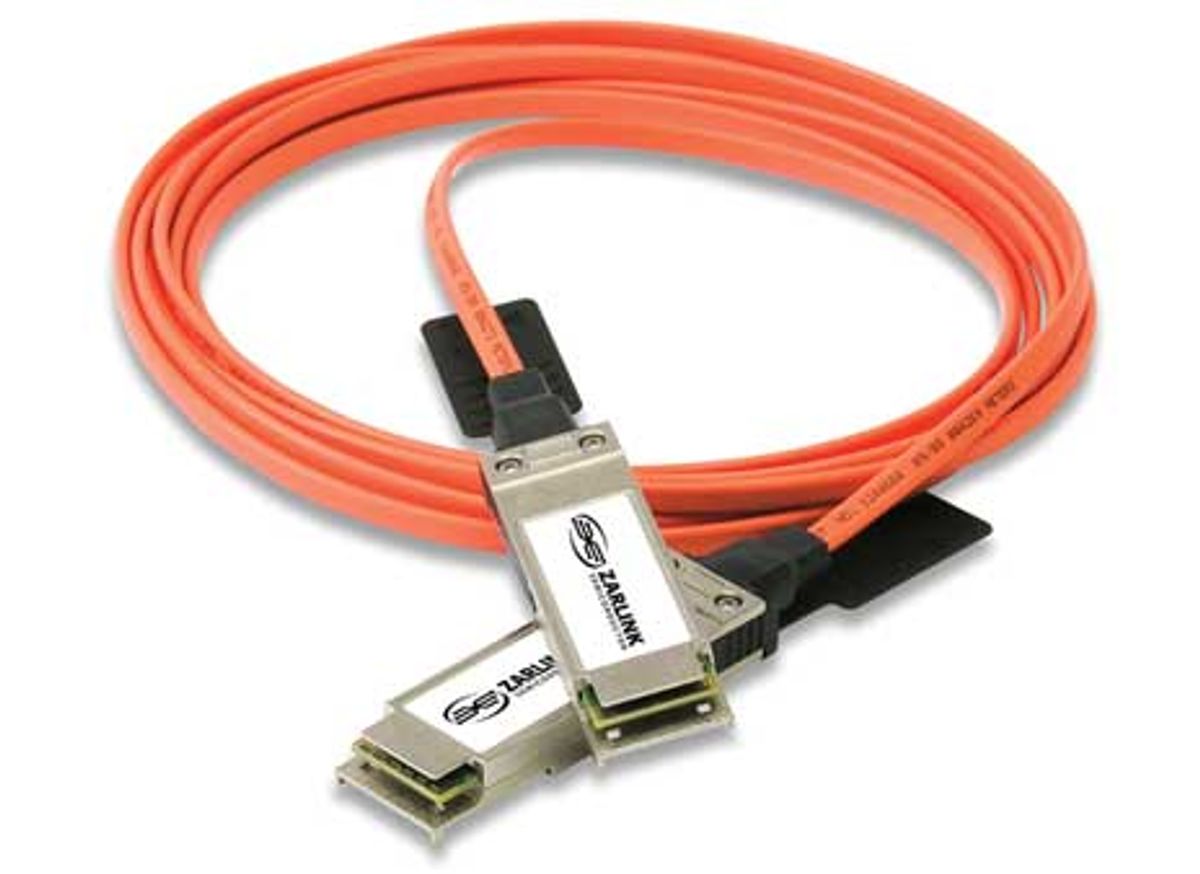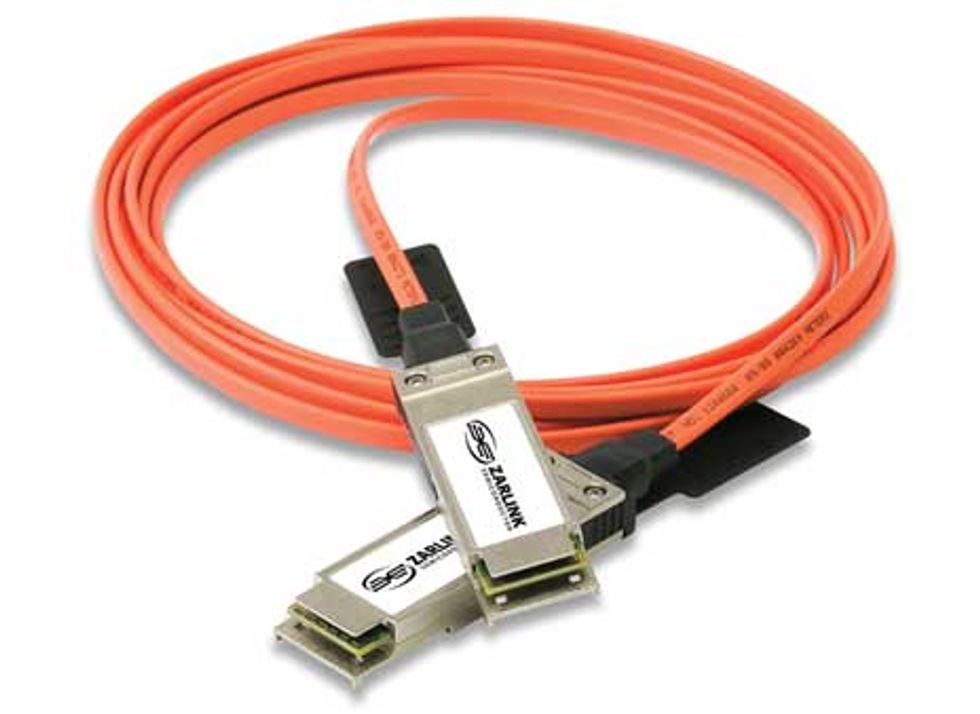This article was corrected on 8 January 2010.
Visitors to this year’s Consumer Electronics Show in Las Vegas will surely be stunned by the lush colors and sounds of high-definition movies as displayed on today’s screens. What they’ll likely overlook is the technology that makes the new HD world possible, one that aims to replace the old paradigm of electrons over copper wire.
Instead we’ll get our data through what’s called active optical cable, or AOC. It has the same shiny plugs on either end as regular consumer electronics cable, but instead of electrons it pushes photons produced in tiny lasers.
The tip of a cable can now accommodate optical components as sophisticated as those in an Internet router of a few years ago. And the cables themselves can be a tenth as wide as conventional cables and far lighter as well.
According to Tom Rossi of Solutions by Design, a Silicon Valley technology consultancy, the next four years will see a tenfold growth in the market for AOC, at prices as low as US $100. In 2008 Rossi wrote a first-ever survey of AOCs for Information Gatekeepers, a Boston research firm. He estimated that 2 million AOCs worth $200 million would end up being sold in 2009 and predicted that the market would reach $2.6 billion by 2013. That’s when consumers will begin to see AOC versions of high-definition multimedia interface (HDMI), USB, and DisplayPort cables at their local electronics stores.
AOCs are already used in high-end computer data centers. They usually adhere to the InfiniBand standard, a bidirectional serial link fast enough to communicate among supercomputer processor nodes or between a supercomputer and its storage devices. According to Stan Swirhun, senior vice president at Zarlink Semiconductor, in Ottawa, a 20-meter, 40-gigabit-per-second InfiniBand AOC costs about $200.
That’s not all that much higher than what the market will bear for most consumer applications. Wander over to the video section at Best Buy and you’ll find copper HDMI cables that go as high as $170. And the cost of the most expensive part of an AOC—the solid-state laser and photon detectors on either end that convert between electronic and photonic signals—is dropping.
”Today’s data centers are establishing the model for tomorrow’s home IT requirements,” says Robin Crandell, marketing vice president of Berlin-based MergeOptics. ”When you add up the computing power in the home, along with the associated storage and high-speed interconnects, it’s kind of like a mini data center.”
At the 2008 Consumer Electronics Show, Luxtera, based in Carlsbad, Calif., debuted a DisplayPort AOC that could carry video at up to 10 Gb/s as far as 4 kilometers. Conventional copper can’t do much better than 5 Gb/s over distances greater than 5 meters. And HDMI, USB, and DisplayPort standards are approaching 5 Gb/s. ”At short distances and lower speeds, the competition is copper,” said Zarlink’s Swirhun. ”At longer distances and at greater speeds, there’s no real competition.”
Nevertheless, copper wire has hardly breathed its last, says Darren Crews, a platform engineer at Intel. ”Copper is everywhere. There have been and are huge investments to move that technology forward.” Crews led the division at Intel that created an InfiniBand AOC design, which was eventually sold to Emcore Corp., in Albuquerque.
Emcore and Zarlink now dominate the AOC marketplace. But new companies, such as Avago, Finisar, Reflex Photonics, and Tyco, as well as MergeOptics and Luxtera, have quickly jumped in—attracted no doubt by a market that is increasing even more quickly than the data rates themselves.
About the Author
Mark Anderson covered two winning technologies in this issue. In ”A More Cerebral Cortex”, he describes a hot-rodded smartphone chip with the power of a PC processor, designed by Intrinsity. Even during breaks, the brains of Intrinsity’s engineers were still running at full speed, Anderson noted. The engineers turned the lunchroom’s wall of windows into a dry-erase board, covering it in equations and circuit diagrams. In ”Optical Lasers in a $100 Cable. Really”, Anderson reports that optical cable technology is overtaking copper, even in home electronics.

